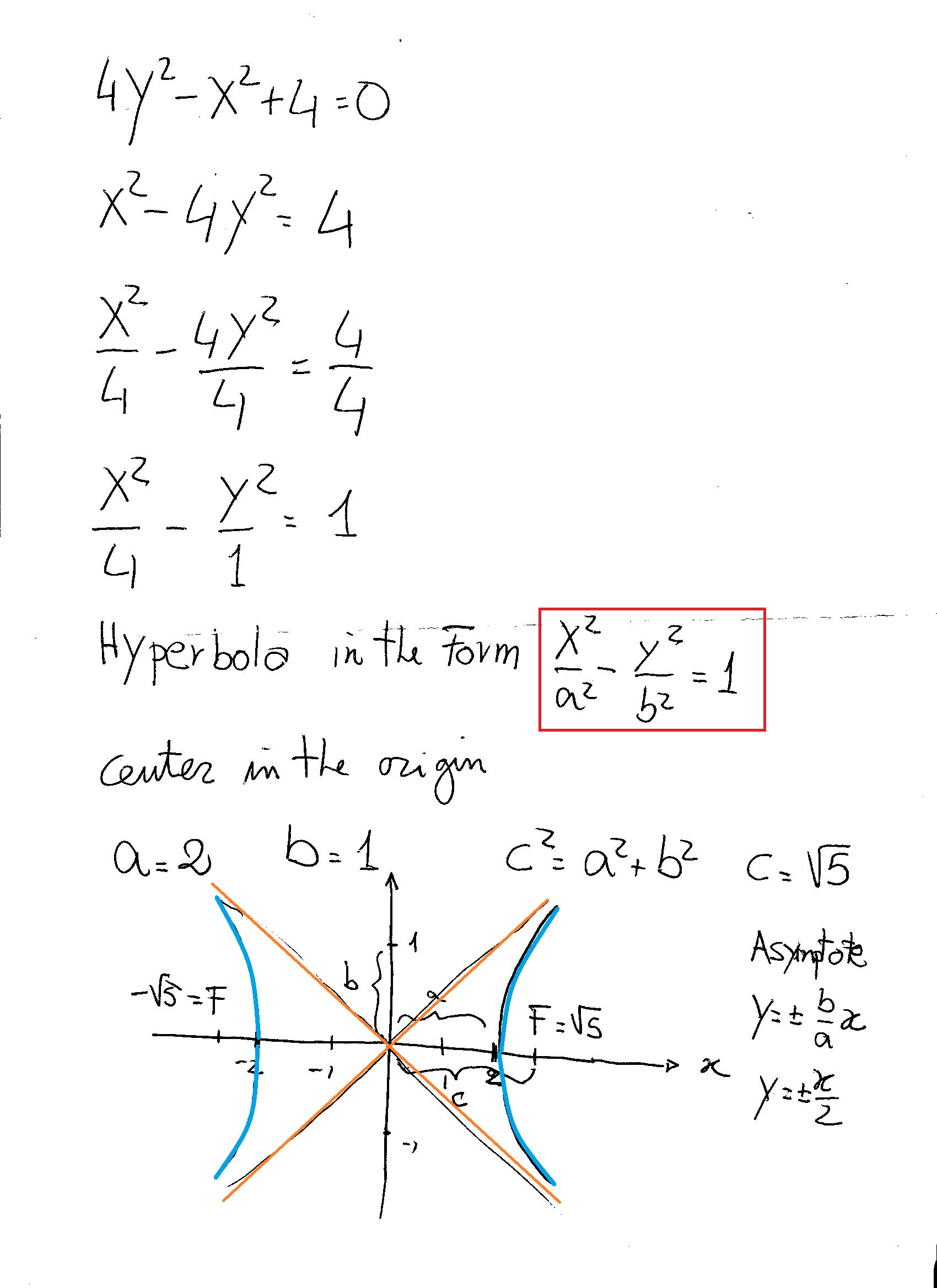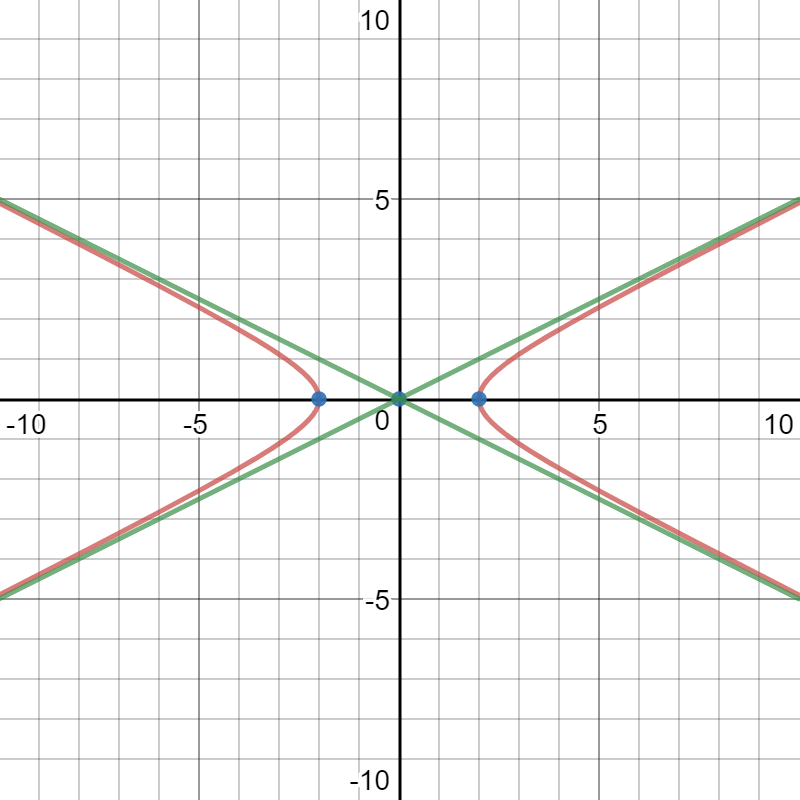How do you identity if the equation #4y^2-x^2+4=0# is a parabola, circle, ellipse, or hyperbola and how do you graph it?
2 Answers
I wold say an hyperbola:
Explanation:
Have a look:

Please seen the explanation.
Explanation:
When given an equation in the form that you have been given, you can use the general Cartesian form for a conic section:
Please observe that slight rearrangement of the given equation,
Fits equation [1] with:
The section of the reference, entitled Discriminant, tells you how to determine what it is:
The fact that the discriminant is greater than 0 tells us that the equation describes a hyperbola.
Subtract for 4 from both sides of equation [2]:
Divide both sides by -4:
This fits the standard form
I will fill in the equation to help you see it:
Please observe that equation [5] matches the variables of equation [4]:
The form for equation [4] is important for graphing because of the following reasons:
- Everything is centered about the point
#(h,k) = (0,0)# - The vertices of the hyperbola are located at
#(h-a,k) = (-2,0) and (h+a,k) = (2,0)# - The equations of the asymptotes are
#y = -b/a(x-h)+k and y = -b/a(x-h)+k# which are the two lines# y = -1/2x and y = 1/2x#
This should help you to graph it.
Here is a graph of the hyperbola (red) with the vertices and the center (blue) and the asymptotes (green).


